- Home
- Michael Byrnes
The Sacred Bones Page 24
The Sacred Bones Read online
Page 24
Santelli was temporarily encouraged by this, but acutely aware that Father Donovan remained troubled.
"There's much more here, however," Donovan warned. "The book describes events leading to Jesus's apprehension and crucifixion. Again, most of Joseph's account is in agreement with the synoptic Gospels...with some minor discrepancies. According to Joseph of Arimathea, he himself secretly negotiated with Pontius Pilate to remove Christ from the cross, in exchange for a hefty sum."
"A bribe?"
"Yes. Probably a supplement to Rome's meager pension." Donovan took a deep breath and gathered himself. "In the New Testament, Jesus's body was supposedly laid out for burial in Joseph's family crypt."
"Before you continue, I must ask. This Templar relic...the book. Is it authentic?"
"I had the parchment, leather, and ink dated. The origin is unquestionably first century. But this book isn't the relic Jacques DeMolay implied. It's merely a means of finding the real treasure he alluded to."
Santelli stared at him.
"Joseph of Arimathea describes Jesus's burial rituals in vivid detail. How the body was cleaned, wrapped in spices and linen, and then bound. Coins were placed over the eyes." Donovan's voice sank an octave. "It claims that the body was laid out in Joseph's tomb...for twelve months."
"A year?" Santelli was aghast. "Patrick, this isn't yet more Gnostic scripture?" In the past Donovan had routinely briefed him on the many pre-biblical writings that presented Jesus quite differently-- an attempt by early leaders to entice pagans to adopt the Christian faith. Many of those stories were wildly exaggerated, rife with philosophical interpretations of Jesus's teachings.
"According to Joseph-- the man entrusted with burying Jesus-- there never was a physical resurrection. You see..." There was no subtle way for him to say what needed to be said. He locked eyes with the cardinal. "Christ died a mortal death."
It wasn't the first time Santelli had heard this argument. "But we've been through all this before-- assertions about early Christians seeing resurrection as being spiritual not physical." He gestured at the book dismissively. "This Ephemeris Conlusio is a clear contradiction to scripture. I'm glad you found it. We'll need to ensure it doesn't fall into the wrong hands. We don't need some enemy of the Church rushing off to the media."
"I'm afraid there's more."
Santelli watched silently as Donovan reached into his satchel and removed a furled, yellow scroll. He laid it out on the desk.
The Cardinal leaned in. "What is this?"
"A technical illustration-- a kind of map, actually."
He made a face. "Certainly doesn't look technical to me. A child could have drawn this."
The one-dimensional style used to draft the image was simplistic, Donovan would agree. But three-dimensional illustrations weren't employed until the Renaissance period, and he wasn't about to belabor the point with Santelli.
"Despite its lack of detail, there are a few critical things you can see here," Donovan explained. He indicated the elongated rectangular base. "This is Temple Mount in Jerusalem." Then he pointed to the image drawn atop it. "This is the Jewish Temple that was built by Herod the Great, later destroyed by the Romans in 70 AD. As you know, the Dome of the Rock Mosque is there now."
Santelli looked up sharply. "Temple Mount?"
"Yes," Donovan confirmed. "This is Joseph of Arimathea's representation of how it appeared in 30 AD during the time of Christ."
Donovan explained that Joseph's writings described in great detail what the temple looked like-- its rectangular courtyards and sacred Tabernacle; its storage houses for oil and wood; the water basins used to consecrate sacrificial offerings and the wooden pyres to burn sacred animals during Passover. He said that Joseph had even noted the temple's sacred threshold beyond which gentiles were forbidden to cross-- a railed, outer perimeter called the "Chell." Then there was the account of the Roman garrison that adjoined Temple Mount-- the place where Jesus was taken before Pontius Pilate.
"But it's this spot here"-- Donovan pointed to the small darkened square that Joseph had drawn inside the gut of the platform-- "that's most important. It's meant to show the location of Jesus's crypt. In the text, Joseph includes specific measurements as to its proximity from the Temple Mount's outer walls."
Santelli's hand was over his mouth again. For a few seconds he remained perfectly still.
Beyond the window the looming black clouds finally made good on their threat.
"After obtaining the Ephemeris Conlusio," Donovan continued, "I researched the site in great detail. I'm absolutely certain that the secret crypt is still there. I believe that Crusaders-- the Knights Templar, in fact-- might have discovered the crypt and secured it."
"How can you be so sure?"
Donovan reached across the desk and carefully turned the ancient pages, stopping on a group of sketches. "This is why."
The cardinal had trouble comprehending what appeared to be a catalogued collection-- the drawing style equally crude.
"Those items," Donovan went on, "are the relics that Joseph of Arimathea buried in the crypt. The bones, coins, and nails. Plus the ossuary, of course. These are the things Jacques DeMolay was referring to."
Santelli was thunderstruck. Slowly his eyes settled on an image of a dolphin wrapped around a trident "That symbol there. What does it mean?"
"It's the reason I'm sure these items are still secure." He explained its significance.
Santelli crossed himself and set it down.
"If these relics had ever been discovered, without a doubt, it would certainly have been referenced somewhere. In fact, we probably wouldn't even be sitting here having this conversation if they had been." Donovan retrieved yet another document from his satchel. "Then there's this recent article from the Jerusalem Post which our mysterious benefactor included with the book."
Santelli snatched it away and repeated the Post's headline out loud. "'Jewish and Muslim Archaeologists Cleared to Excavate Beneath Temple Mount.'"
Donovan gave Santelli time to absorb the rest of the article, then spoke up. "Since Israeli peace accords don't permit digging on the site, the Templar Knights are Temple Mount's last known excavators. But in 1996 the Muslim trust that oversees the site was permitted to clear rubble from a vast chamber beneath the platform-- a space that was once used by the Templars as a stable, and completely blocked off since their twelfth-century occupation. The messenger who delivered this book was an Arab. Therefore, I'm fairly certain that the Ephemeris Conlusio must have been discovered by the Muslims during their excavations."
"But why have they waited until now to present it?"
"At first, I too was suspicious," Donovan confessed. "Though now I've got a good idea as to why." From the satchel he retrieved a modern drawing-- his own. The final exhibit of the presentation. "When the areas were cleared, the Muslims converted that space into what is now called the Marwani Mosque. Here's an aerial view of the Temple Mount as it stands today. Using Joseph's measurements, I've calculated the precise location of the crypt."
On the schematic, Donovan had converted the ancient Roman measuring units, gradii-- one gradus equal to almost three-quarters of a meter-- to their modern metric equivalent. "I've marked in red the area that is now the Marwani Mosque, situated about eleven meters below the esplanade's surface." The shape of the subterranean mosque looked like a stacked bar chart.
Santelli grasped what Donovan was implying. "My God, it's right next to the secret chamber."
"Directly abutting the mosque's rear wall. Muslim and Jewish archaeologists already suspect that chambers exist beneath Temple Mount and they'll be performing surface scans to detect them."
Santelli's face was drained. "Then they will find this place."
"It would be impossible to miss," Donovan grimly confirmed. "If the relics described in the Ephemeris Conlusio are real, there's a good chance that the physical remains of Christ may be unearthed in a few weeks. That is why I have come here today. To ask you...what can
we do?"
"I think that's all too clear, Patrick," Santelli's voice was brisk. "We must retrieve those relics from beneath Temple Mount. Over two billion Christians depend on the Gospels of Jesus Christ. To disrupt their faith is to disrupt social order. We have a very real responsibility here. This isn't just a matter of theology."
"But there's no diplomatic way to obtain them," Donovan reminded the cardinal. "The political situation in Israel is far too complicated."
"Who said anything about diplomacy?" Santelli reached over to the intercom mounted on his desk. "Father Martin? In my phone list, you'll find the number for a 'Salvatore Conte.' Please summon him to my office immediately."
50.
Veering off congested Via Nomentana through the Villa Torlonia park entrance, Giovanni Bersei slowed along a narrow bike path, the Vespa's engine purring softly.
Here, beneath the sprawling English gardens where a flurry of joggers and cyclists went about their exercise regimens, a labyrinth of Jewish crypts formed just over nine kilometers of what had recently proved to be Rome's oldest catacombs-- the burial grounds that ancient Rome insisted be well outside the city walls. And somewhere in this subterranean realm, he was certain, lay part of an ancient secret tied to Jesus Christ.
Glancing up at the weathered neoclassical edifice that made this place famous-- the palatial villa where Benito Mussolini had once resided-- he angled toward a set of low buildings adjacent to the building's rear courtyard. Here were the stables where excavations in 1918 had accidentally uncovered the first burial chambers.
Outside the Villa Torlonia catacomb gateway, Bersei killed the Vespa's engine, dismounted, and rocked the scooter onto its kickstand. Opening the rear cargo box, he removed his laptop bag and a sturdy flashlight, then stowed his helmet inside.
Though he'd been caught up in rush hour traffic for the past forty minutes, it was still only ten minutes to nine. Most likely, the place would still be locked up.
Bersei tried the door. It opened.
Inside the crude foyer an elderly docent sat behind a desk, reading a Clive Cussler novel. There was a large boat on the cover caught in a massive whirlpool's swirling vortex. The old man's deep-set, hazy eyes shifted up, squinting over thick bifocals. A smile broke across his face-- an exterior as aged and historically complex as Mussolini's villa.
"Ah, Signore Bersei," he placed his book down and spread his hands. "Come sta?"
"Bene grazi, Mario. E lei?"
"Better and better everyday," the old man boasted in thick Italian. "It's been a while."
"It has. Glad you're an early bird. I thought I'd be standing outside for awhile."
"They have me here at eight nowadays, just in case anyone feels motivated to get some work done. They've been trying to speed up the restoration."
The Soprintendenza Archeologica di Roma still denied tourists access to the Jewish catacombs due to the intensive conservation efforts that were still underway-- a project now spanning more than a decade. Noxious gases still present in the deep recesses of the subterranean labyrinth of crypts had only prolonged the delay.
Bersei pointed to the book. "I see you're keeping busy."
The docent shrugged. "Catching up on my reading. Still haven't gotten word that we'll be opening any time soon. I need to find action somewhere else."
Bersei laughed.
"What brings you back here?" The old man stood, stuffing frail hands into his pockets. Mario's frame was mostly bone, dramatically stooped by age.
It had been a while since Bersei's last visit. Two years, in fact. This was only one of over sixty Roman burial sites he had surveyed for the Pontifical Commission over the years. "The latest carbon dating results have me second-guessing some of my original assumptions. Just want to have a second look at some of the hypogea."
The story was a good one. Only a few months ago, a team of archaeologists had carbon dated charcoal and wood fragments embedded in some of the crypt's stucco. The remarkable results dated the site as far back as 50 BC-- over a century earlier than the city's youngest Christian catacombs. The implications of such a discovery were profound, strongly supporting prior theories about Jewish influence on Christian burial rituals. But what was most fascinating was that mingled with the Judaic motifs were symbols closely tied to the early Christian movement. And these vague recollections had brought Bersei back here.
"I see you've got your flashlight."
The anthropologist held it up proudly. "Always prepared. Do you need my card?" Bersei pulled out his wallet, flipping it open to a laminated identification card granting him full access to most of the city's historic sites. Few academics had earned this status.
Mario waved it away. "I'll log you in," he said, pointing to a clipboard at his side.
"No one else down there?"
"You've got it all to yourself."
Somehow, that wasn't sitting right with him. He smiled uneasily.
The docent passed him a piece of paper. "Here's an updated map for you."
Bersei eyed the revised plan of tunnels and galleries. Now it was even more evident that the passageways had evolved haphazardly over centuries of expansion. The complicated representation looked more like a pattern of cracks in a crazed piece of pottery. A web. "I won't be long. Would you mind if I left this with you for a little while?" He held up the laptop bag.
"No problem. I'll keep it behind the desk."
Handing the bag over, he made his way across the foyer and flicked on the flashlight, angling it low to illuminate the stone steps that plunged into pure blackness.
At the base of the steps, Bersei fought off a shiver and paused to adjust his breathing to the frigid, damp air-- the brutal conditions that challenged restoration. It was remarkable that so many frescoes and etchings had been preserved down here, in an unforgiving environment that had completely ravaged the corpses that once occupied its thousands of niches. Barely any bones had been uncovered during excavations in these tombs, most having been stolen centuries earlier by unscrupulous charlatans who had turned a profit by passing them off as the relics of martyrs and saints. Ironic, he thought, seeing as the place was constructed like a maze specifically to avoid looting. So much for protecting the bodies for eventual resurrection. Come Judgment Day, there would be plenty of disappointed souls.
He pointed the light down the narrow passageway-- barely a meter wide and less than three meters high-- where it dissolved into total darkness only a few meters ahead. Almost two thousand years ago, the Fassores, a guild of diggers, had hand-carved this labyrinth of tombs out of the soft volcanic rock or tufa that formed Rome's foundation. Burial slots called loculi layered the walls on both sides. In ancient times, bodies had been shrouded and laid out on these shelves to decompose for excarnation-- the ritual rotting of flesh that expiated earthly sin. All were now empty.
These subterranean galleries had been layered into the earth, with three levels of similar tunnels running beneath this one. Luckily, the chamber he was most interested in viewing was in the catacomb's upper gallery.
The necropolis, he thought. "City of the dead." He shielded his nose from the moldy smell and hoped that nobody was home. Swallowing hard, Giovanni Bersei pushed forward.
* * *
"Desidera qualcosa?" Mario set down his book for the second time and studied the rugged-looking man, standing in front of his desk. The man looked preoccupied. Mario tried English. "Can I help you?"
Aggravated by the formality, Conte didn't reply. Following Bersei here, he'd been wondering why the hell the scientist had turned into this park. Now as he read the signage hanging behind the docent's desk, he was starting to make better sense of it. Jewish catacombs? His eyes panned over to the other doorway, opening to a darkened stairwell. Most likely, it served as the exit too. He liked that. "No lights?" Conte queried in Italian.
"You need a flashlight down there," the old man replied.
Again, Conte was pleased.
"But the exhibit isn't open to the public,"
the docent continued, smiling wryly. "And unless you have proper identification, I'll have to ask you to leave."
Power wielded by the powerless. Conte disregarded the request, ogling a clipboard on the desk. A visitor's sign-in sheet. And only one name was listed there; the only name that mattered. Besides his quarry, it was clear that the place was empty. This was going to be even easier than he thought. He slid his left hand into his coat pocket and calmly withdrew a small syringe.
As the menacing figure circled the desk in three quick strides, Mario Beneditti was just starting to realize the danger he was in. Cornered, the old man froze.
"Pathetic," Conte muttered. He threw out his right hand, clasping the docent by the back of his neck, while his left hand swiftly arced through the air, thrusting the needle deep into neck muscle, depressing the plunger to inject a concentrate of Tubarine-- a drug used during heart surgery to paralyze the cardiac tissue. Never knowing when he might need it, Conte always kept a lethal dose in his possession.
As the old man crumpled to the floor, Conte stepped smartly away.
The toxins instantly invaded Mario Beneditti's bloodstream and he clawed at his constricting chest with leaden fingers. His face contorted in agony as his heart seized up like a blown engine. His body gave a last, shuddering convulsion and lay still.
Salvatore Conte always marveled at this method's lean efficiency. Whoever found the old man would assume he'd had a heart attack. Any basic autopsy would come to the same conclusion.
Clean. Very clean.
After securing the deadbolt on the inside of the entry door, and pocketing the empty syringe, Conte rummaged through the desk drawers until he found the docent's flashlight. He noticed Bersei's laptop bag had been set aside and made a mental note to take it with him on his way out. Then he reached down to the corpse and yanked away a set of keys.
From beneath his coat, he drew his Glock 9mm. He'd try his best to avoid shooting Bersei. That wouldn't be clean and he wasn't looking for complications.

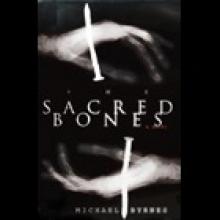 The Sacred Bones
The Sacred Bones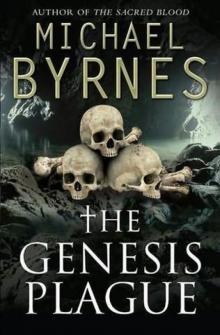 The Genesis Plague (2010)
The Genesis Plague (2010)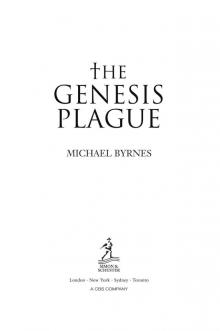 The Genesis Plague
The Genesis Plague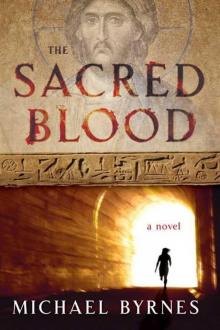 The Sacred Blood
The Sacred Blood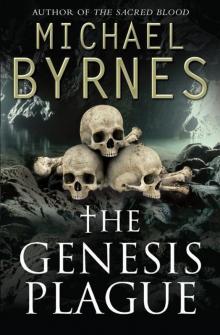 The Genesis Plague tf-1
The Genesis Plague tf-1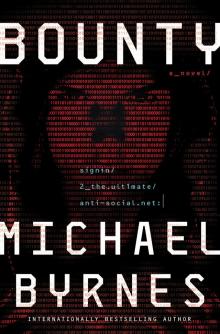 Bounty
Bounty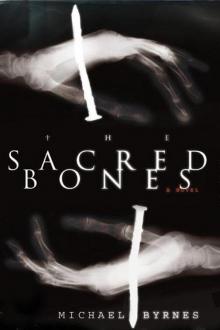 Sacred Bones : A Novel
Sacred Bones : A Novel